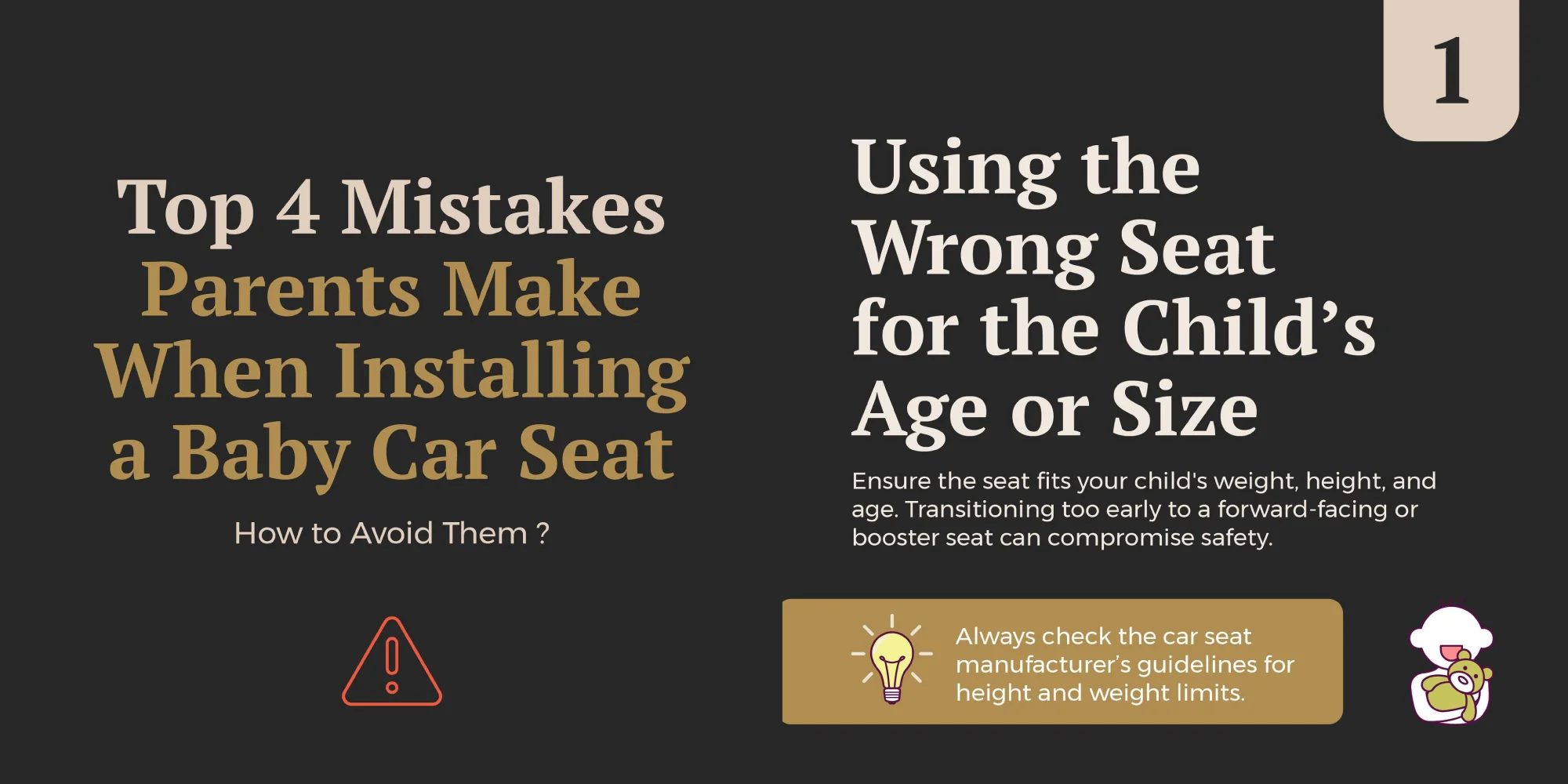
Top 4 Mistakes Parents Make When Installing a Baby Car Seat (and How to Avoid)
 Quinton Care Team
Quinton Care Team
Quick Safety Checklist for Car Seat Installation
- Wrong Seat for Age/Size – Always match the car seat to the weight and height.
- Harness Issues – Straps must be snug, clip must be at the armpit level.
- Loose Installation – The Car seat shouldn’t move more than 1 inch.
- Vehicle Rules Ignored – Check car and seat manuals for correct setup.
Introduction
Installing a baby car seat may seem straightforward, but small mistakes can have serious safety consequences for many Malaysian parents. A properly fitted car seat isn’t just about following steps—it’s about ensuring every ride keeps your child secure. Unfortunately, studies show that a majority of car seats are not installed correctly, often due to simple oversights.
That’s why knowing the top car seat installation mistakes is essential. From using the wrong seat for your child’s size to not tightening the harness enough, these errors can put your little one at risk. In this guide, we’ll break down the four most common mistakes parents make and show you how to avoid them, so your child travels as safely as possible on Malaysian roads.
1. Using the Wrong Seat for the Child’s Age or Size
One of the most frequent errors parents make is choosing a car seat that doesn’t match their child’s size. For instance, some families move their child to a forward-facing seat too early because it seems more comfortable, or they assume their baby has outgrown the infant seat sooner than recommended. The truth is, every seat is designed with weight and height guidelines to ensure maximum safety. Ignoring these limits increases the chance of injury in the event of a crash, because the seat simply won’t protect your child the way it should.
To avoid this, always double-check the car seat manufacturer’s specifications and compare them with your child’s current weight and height. For Malaysian parents who often balance hand-me-downs or look for budget options, it may be tempting to reuse an older sibling’s seat. However, safety should always come first. Investing in the right seat for your child’s stage ensures not only comfort but also peace of mind that your little one is as secure as possible.
2. Incorrect Harness Position or Tension
Even if you’ve chosen the right car seat, an incorrectly fitted harness can undo its safety benefits. The harness should always sit snugly against your child’s body, with no slack or loose fabric. A quick way to check this is by doing the "pinch test": if you can pinch the strap between your fingers at the shoulders, it’s too loose. Additionally, the chest clip should always be at armpit level, not on the stomach or neck. Twisted straps also reduce safety, so always take a moment to smooth them out.
In Malaysia’s humid weather, parents sometimes loosen the harness for comfort, but this can be dangerous. A loose harness allows too much movement during sudden stops, which increases the risk of injury. Instead, dress your baby in thin, breathable layers and keep the harness snug. Think of the harness as your child’s lifeline—it’s what keeps them safely restrained in all driving conditions, from city traffic in Kuala Lumpur to longer highway trips.
3. Not Securing the Car Seat Tightly Enough
Another critical mistake is leaving the car seat too loose. A properly installed seat should not move more than one inch side-to-side or front-to-back when pulled at the belt path. Many parents underestimate how much strength it takes to secure the seat. Using your body weight to press down while tightening the seatbelt or ISOFIX connectors makes a big difference in achieving a firm fit.
For Malaysian parents who switch car seats between vehicles often—like from the family car to the grandparents’ car—this mistake becomes more common. Each time you reinstall the seat, you need to check its tightness again. A loosely secured seat may look fine, but in an accident, it could shift dangerously. Taking those extra few minutes to check for movement ensures your child has a safe, stable seat every time you drive.
4. Not Knowing Vehicle-Specific Installation Rules
Every car is different, and so are its rules for car seat installation. Some vehicles have unique anchor points for the top tether, while others may require airbag deactivation if you’re installing a seat in the front. Many parents overlook these details, thinking all cars are the same, but skipping these steps could compromise safety. Always consult both your vehicle’s manual and the car seat’s manual to ensure you’re installing it correctly.
In Malaysia, where families often use multiple cars or rely on ride-sharing services, it’s even more important to be aware of these specifics. For example, smaller cars may have limited boot space or anchor points in different locations, making it necessary to adapt your installation method. Taking the time to learn about your vehicle’s requirements helps you avoid costly mistakes and ensures that no matter what car you’re driving, your baby remains safe and secure.
Conclusion
Installing a car seat isn’t just about ticking boxes—it’s about protecting your child every time they’re on the road. By avoiding the most common mistakes—choosing the wrong seat size, misusing the harness, failing to secure the seat tightly, or ignoring vehicle-specific rules—you’re giving your child the best possible protection.
For more safety advice, visit our internal guide on How Many Car Seat Installation Exists. You can also explore expert recommendations from Safe Kids Worldwide for trusted international guidance. Together, these resources ensure every Malaysian parent can travel with greater peace of mind.